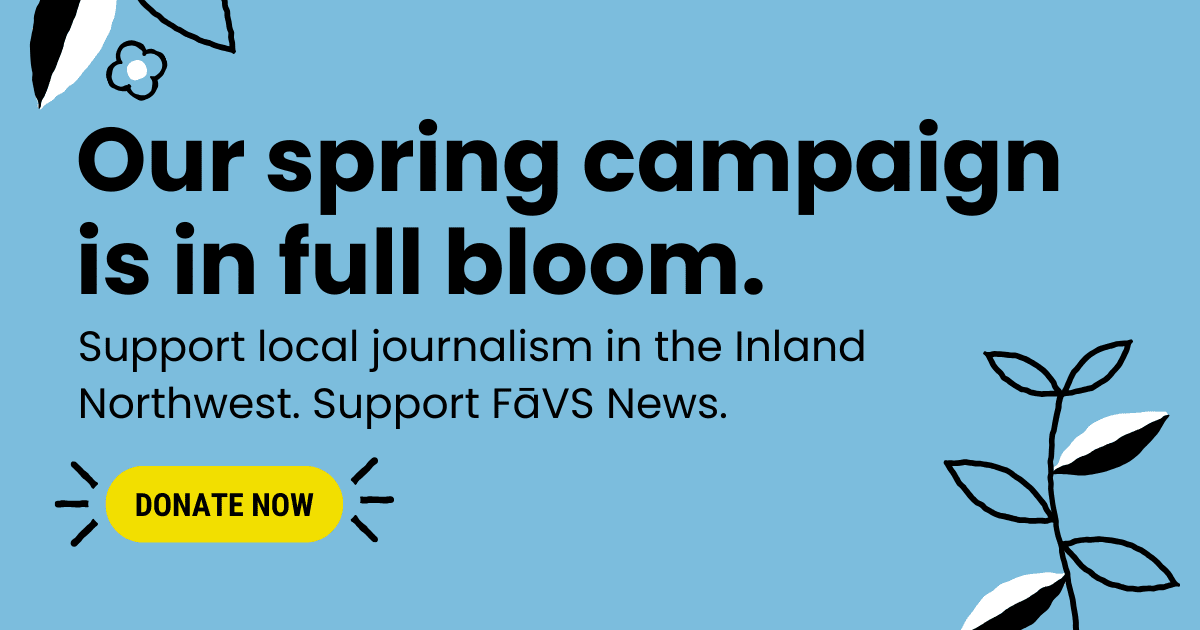
Last week, I attended a show about Rachel Corrie at Gonzaga University. Corrie died when the Israeli Defense Forces bulldozed a house she was trying to protect in Gaza 11 years ago. It is sad and very complicated. Why was she there? Who was she trying to persuade to change? Why was the driver of the bulldozer there? What situations in his home persuaded him to bulldoze another person’s home? Some claim she was a casualty of war; others see her as a martyr for Palestine. She was a 23-year-old American peace activist trying to change hearts and minds with her words and actions.
Her story, “My Name is Rachel Corrie,” is compelling. The play is based on the diaries and emails of Rachel Corrie, which were edited by Alan Rickman and journalist Katharine Viner. After the Gonzaga production, Erin Fitzgerald, who played Corrie in the one woman show, was asked if playing this part had changed her. Answering yes, she talked of her plans to go to Gaza and find better ways to serve her community. Director, Forrest Potter, talked about the intersection of art and social justice and Rachel’s parents, Cindy and Craig, shared their experiences and goals of the last 11 years.
Although the show took place on a university campus, the crowd was primarily made up of people from the community, people in their 40’s, 50’s and 60’s. Having heard this story, what is one thing we can do, asked one of the audience members. There are many things that can be done: stand with people who seek peace, whether it is at home or in areas of conflict, listen and share with like-minded people, vote with your dollars, or give money to causes you support and withdraw your money from causes you don’t support. Physical presence and money are both powerful persuaders. The challenge is controlling who is affected and persuaded to change by your giving of yourself, your money, and your time. In my experience we often can’t actually control or change the actions of others by pressuring them and often there are unforeseen consequences.
Any death is tragic and we all need to find better ways to create a peaceful world, where no one is standing in front of a bull dozer and no one — not Israelis, Palestinians, American or anyone else is afraid for their life and has to watch their physical or spiritual home destroyed.
A 2010 study said, “Persuasion is at the root of countless social exchanges in which one person or group is motivated to have another share its beliefs, desires, or behavioral intentions.”
E. B. Falk, L. Rameson, et al. went on to say, “Feeling persuaded was associated with increased activity in posterior superior temporal sulcus bilaterally, temporal pole bilaterally, and dorsomedial prefrontal cortex. The findings suggest a discrete set of underlying mechanisms in the moment that the persuasion process occurs … Activity in this network has been associated with social cognition and mentalizing and is consistent with models of persuasion that emphasize the importance of social cognitive processing in determining the efficacy of persuasive communication.”
So what does this mean? The prefrontal cortex is about consciousness and cognitive skills or thinking. We have to have a certain level of consciousness about ourselves, our life and our world in order to be able to think about something new or think about a different way of approaching a difficult situation.
The temporal lobe on either side of the head interprets auditory information, helps us maintain our balance, physically and perhaps metaphorically as well. How well we are able to listen and understand what we are hearing depends on our temporal lobe function. The temporal lobe also helps us integrate or understand and process sensory information. When we are persuaded to change it is not only a cognitive process but also relies on our sensations. The best way to proceed in life depends not only on what we think is the best way but also what feels right.
And this is where it gets tricky — what one person thinks is right or the best way is often very different from what another person thinks and feels. People and countries go to war over disagreement about what is the right or best way to move forward. Some people are willing to kill for what they believe and others are willing to die but maybe there could be more peace and less death if we would think more clearly and listen more carefully.









